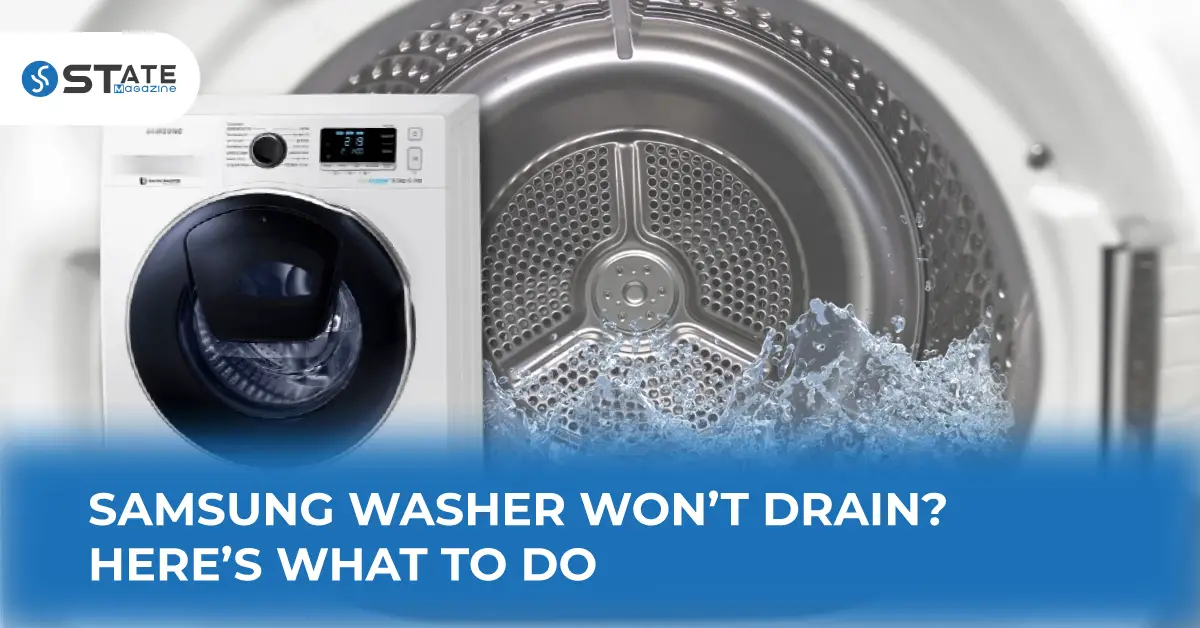If your Samsung washer won’t drain, you would face major inconvenience as you find a heap of laundry in a tub full of water. Even though it is common to have malfunctions in household appliances after some time of use, you might find it disturbing. So the best thing you can do is, try to find the cause for this by inspecting your washing machine. You can use this guide to diagnose the problem and troubleshoot the problem. But if you cannot fix it or even determine the problem, you should seek advice from an experienced technician.
Reasons Why Your Samsung Washer Won’t Drain
Contents
This would happen due to few reasons, and they are listed here. You can follow the steps indicated along with them to troubleshoot and fix your washer.
CAUTION: Before you attempt any repair or troubleshooting of electric appliances, make sure to unplug them from power. Use relevant PPEs to safeguard yourself and prevent any hazards and accidents.
Drain Pump Problems
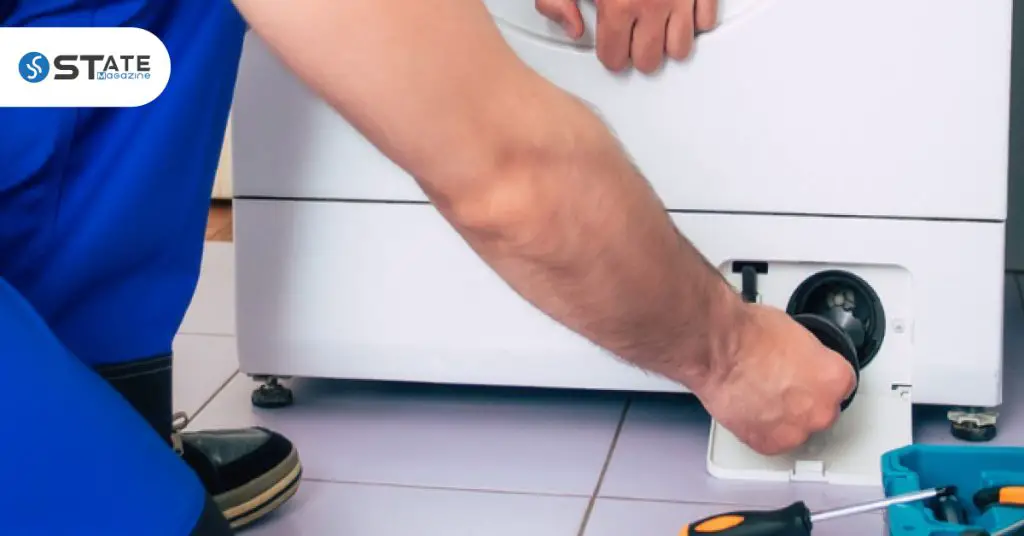
A broken drain pump would not drain the washer water properly. The reason for this malfunction would be due to a simple issue of something obstructing its mechanism, or it can even be a fault in the pump. Most Samsung washers have removable pump covers so you can inspect the pump and remove any clogging or debris. If your Samsung front load washer won’t drain, then look for the pump behind the front door on the bottom.
Check the impellers on the pump, and after cleaning everything, close the cover and start the washer. But if you find that the pump is still not working, then there is a possibility that the pump is faulty and that it is required to replace the pump. If you are not experienced in this matter, you should get the support of a technician. The average cost of a Samsung drain pump would be around $50, but this might vary slightly depending on the model.
Washer Drain Pump Filter
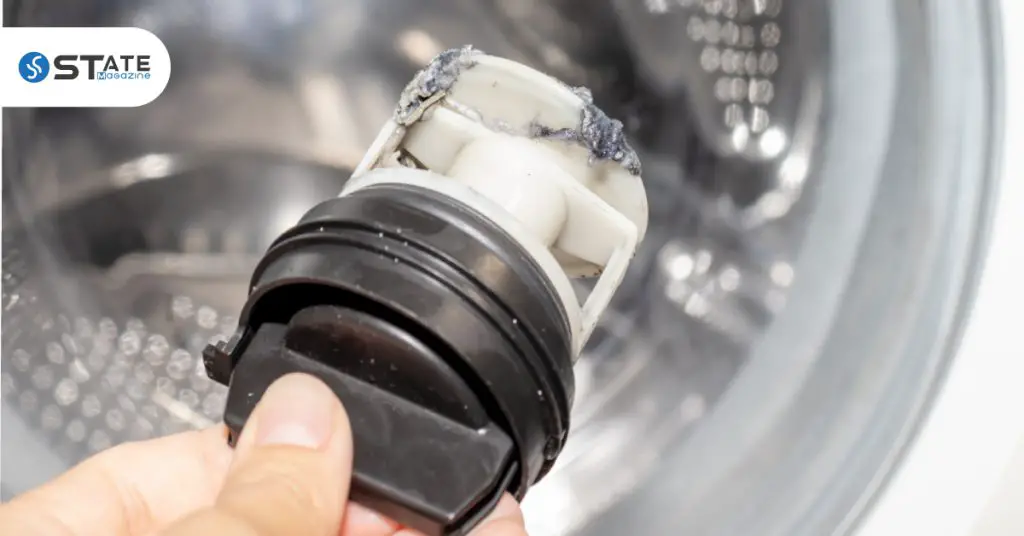
Another reason behind the Samsung washer won’t drain is that the drain filter is clogged or blocked with debris. To prevent these blockages, the filter should be cleaned at least monthly. Follow these steps to clean the drain pump filter.
- Press on the cover and open the pump filter access panel.
- You might have to catch the draining water using a towel and bowl under the drain hose cap.
- Remove the drain hose cap by turning it counterclockwise and drain the water.
- After this, remove the filter and clean it using a soft toothbrush.
- Inspect the filter housing thoroughly and remove any particles and debris.
- After cleaning, you can reinsert the filter and replace the cap by turning it clockwise.
- Finally, close the access panel cover.
Water Level Control Issues

Some Samsung washing machines would have these water level control issues that would cause improper draining of water. To troubleshoot this problem, you need to check the control panel and the valve for water level. If the valve is clogged, then you can clean it out by pouring some vinegar inside. But if the valve is corroded, then it should be replaced. If you have trouble locating the water level valve, you can check it in the user manual.
Electrical Problems
Although Samsung washing machines have good electrical systems, certain problems might occur after several years of use. Sometimes the issues might be related to the fuses and wiring of the washer. Since these issues cannot be tracked easily by an inexperienced person, it is necessary to get an appliance repair technician to troubleshoot the electrical problems. If they suggest that they cannot repair the parts or that the issues cannot be diagnosed, then you might even have to replace the washing machine.
Loose Water Inlet Valve
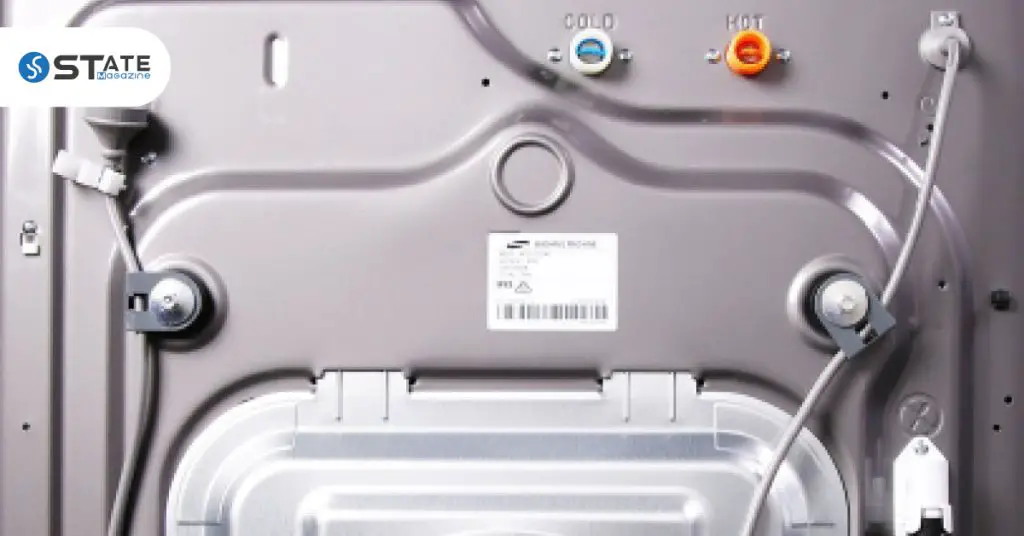
Sometimes, you might misunderstand the leaking of water into the drum as the washer not draining water. A loose or worn-out inlet valve might bring in water to the washer even when it should not. This is because inlet valves can get defective after five or more years of use. Then the water inlet valve needs to be replaced to overcome this problem.
Frozen Drain Hose
In areas where the temperatures drop down below the freezing point, drain hoses located in cold basements or storage rooms can get frozen. You can check this by disconnecting the drain hose from the washing machine and rotating it with your hands. If you feel that it cannot be rotated, then you would need to replace the drain hose. Even though you might be able to thaw the drain hose and use it again, it would crack in the process in most cases.
Clogged Drain Hose
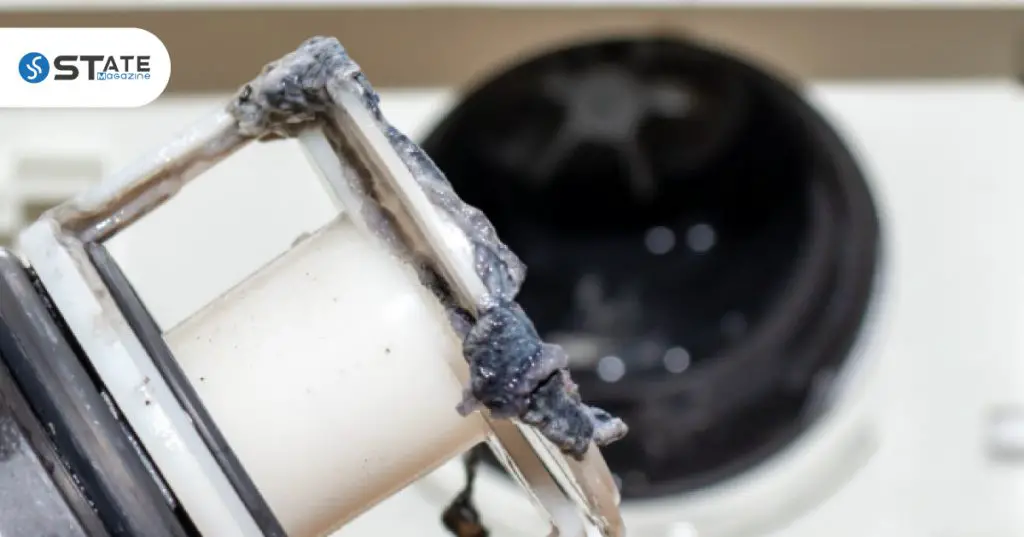
If it has nothing to do with the cold weather, then the problem might be due to clogging in the drain hoses. A blocked drain hose can obstruct the draining of the washer. This can be checked by removing the hose from the standpipe and pouring some water into it. If the water overflows, then the hose is clogged and needs to be cleaned. If you have trouble disconnecting the hose, you can use the user manual.
When installing it back, the hose should get down the sandpipe or sink for 6 to 8 inches without forming an airtight connection. The height should also be about 18 to 96 inches. Make sure that there are no bends and kinks in the hose, which might cause drainage issues; if you find that your drain hose is broken and in bad condition, you might even have to consider replacing it.
Clogged Coin Trap
A coin trap is used in most Samsung washer models to trap any objects from entering the drain line. If the coin trap is clogged, then the Samsung washer won’t drain after rinsing. To avoid this, you can check the coin trap at least once a week. Remove any debris blocking the way and clean it with a damp cloth.
Faulty Pressure Switch
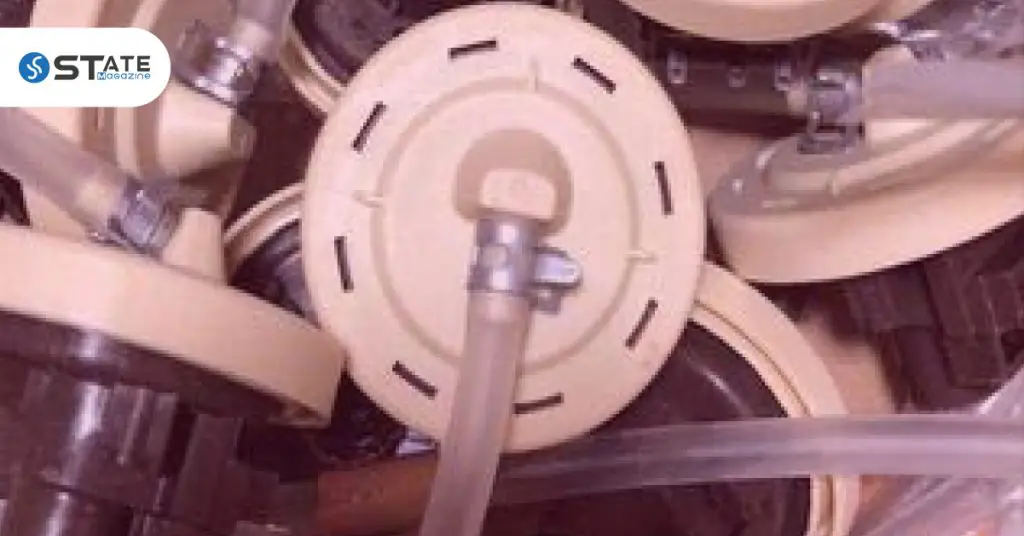
If the pressure switch of the washing machine is faulty, then it would cause the drum to overflow. This is because the switch cannot indicate the signal to shut off the water at the relevant time. So water will continue to overflow and fail to drain. Since this can lead to more water damage, the pressure switch should be replaced as soon as possible. To locate the pressure switch, you might have to use the user manual. With the help of a technician, you can determine whether it is faulty or not.
Door Lock Malfunctions
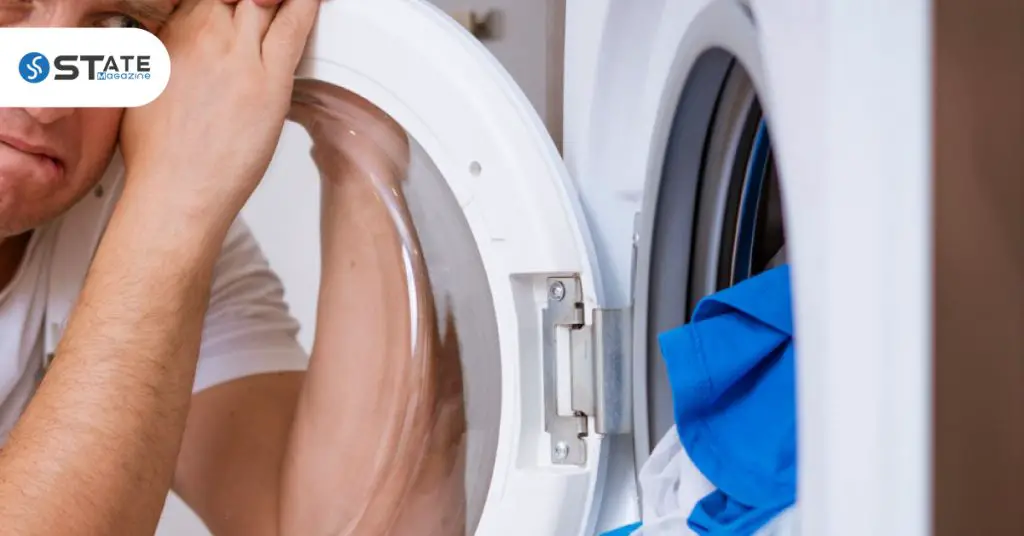
If the door doesn’t close or latch properly, then the Samsung front load washer won’t drain. The switch assembly helps the washer to determine the procedure of the wash cycle. So if the assembly is damaged or clogged, the washer would not know when to start the draining. You can check the continuity of the latch using a multimeter. If there is an issue with this, you should get the help of an experienced technician to replace the components.
Uneven Loads
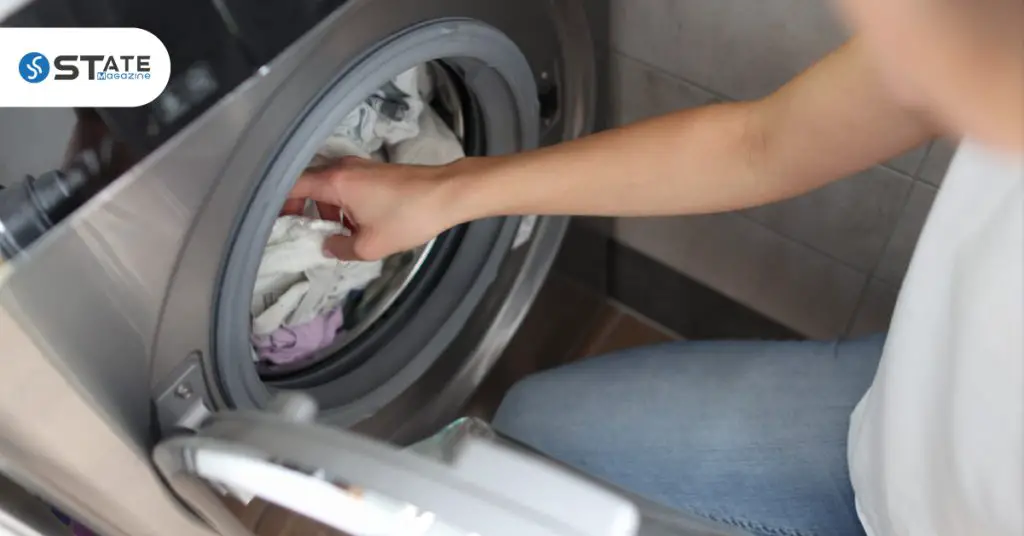
Even though you might not consider this as a major issue, the way you place the laundry load might also affect this. A heavy load should be placed evenly around the drum to prevent unbalance of the washing machine during spinning and draining. If the washer faces such an issue, then the process may stop, and the washer will remain full of soapy water. You would have to re-balance the load manually to overcome this and proceed with the cycle.
Washing Machine Isn’t Leveled
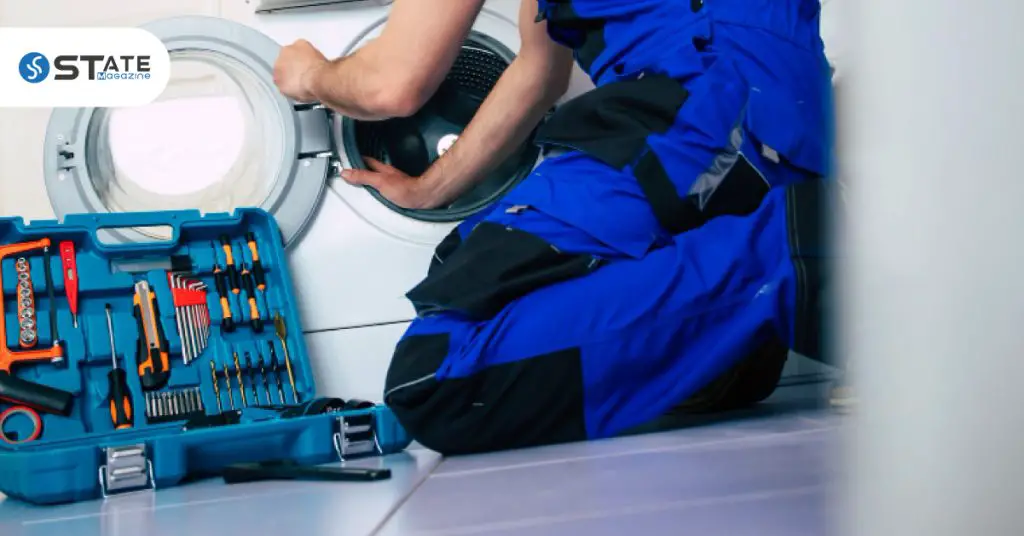
If your washing machine is not leveled properly on the floor, then it would cause draining and spinning problems. Check this using a leveling tool and if you find that it is unleveled, then inspect the floor underneath. The washer might be rock back and forth due to carpeting or slippery surface. To adjust this, rotate the leveling feet anticlockwise to lower them and clockwise to raise them.
How to Drain Water Manually
When troubleshooting a Samsung washing machine not draining, it is necessary to avoid the mess by draining out the water manually. You can manually drain water by following the steps indicated here.
- Before you start, unplug the washing machine from power.
- Open the filter cover at the bottom right corner of the washing machine.
- Place a shallow bowl or a cup over a towel and hold it under the filter cap.
- Remove the cap by unscrewing it to the left and slowly pull it out about 6 inches.
- Collect the water into the bowl or cup.
- Place the filter cap back in and tighten it by rotating to the right.
- Replace the filter cover and plug-in power to the washer again.
Frequently Asked Questions
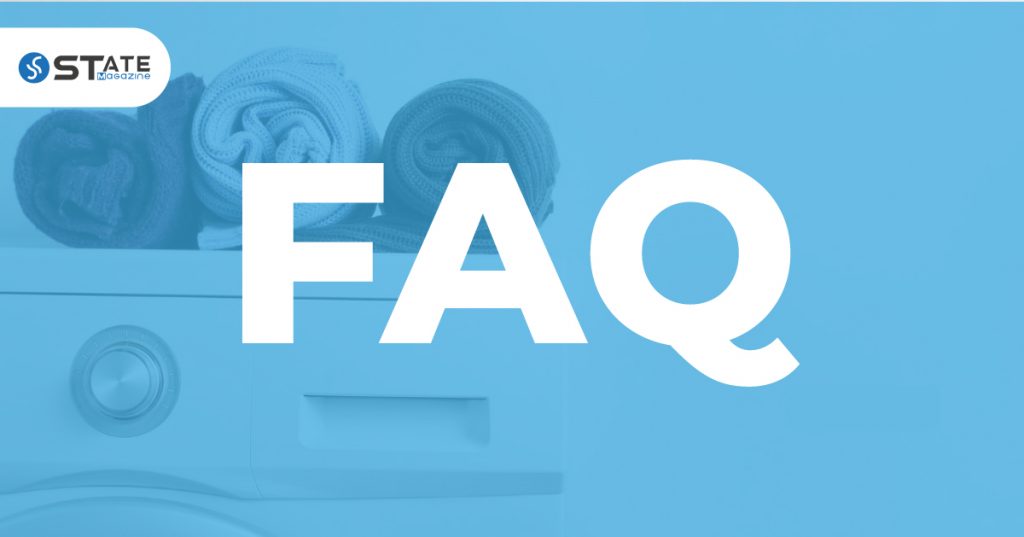
How to reset a Samsung washer?
First, unplug it or turn off the power at the circuit breaker. Then wait for some time until the electrical charge clears out of the washer. This usually takes 1 to 5 minutes at the most. Then power it up again, and that’s all it takes to reset.
Why does my washer keep going off balance?
This might be caused due to laundry caught below the tub or between the agitator and inner tub. A broken suspension rod might also cause the tub to get unbalanced and cause shakiness during operation.
How long is a Samsung appliance warranty?
Samsung provides a warranty of 24 months and an extended warranty for 1 to 5 years.
Conclusion
You have gained proper knowledge on the main reasons for your Samsung washer not draining water. Knowing these possible causes can help you diagnose the fault by yourself. So if it is a minor issue, you can fix it yourself. However, if the issue is complicated and if you have no experience related to home appliances, then you would need to get the support of an appliance repair technician. If the washing machine is too old to be repaired inexpensively, you might even have to replace it with a new one. Find these Worst Washing Machine Brands that you should avoid when buying.
You might also have friends or family facing similar washing machine issues. You can share this article on Troubleshooting Whirlpool Washer Problems.
Find useful articles on fixing your dishwasher if your Bosch Dishwasher won’t start or even if your Maytag Dishwasher has problems in starting.

